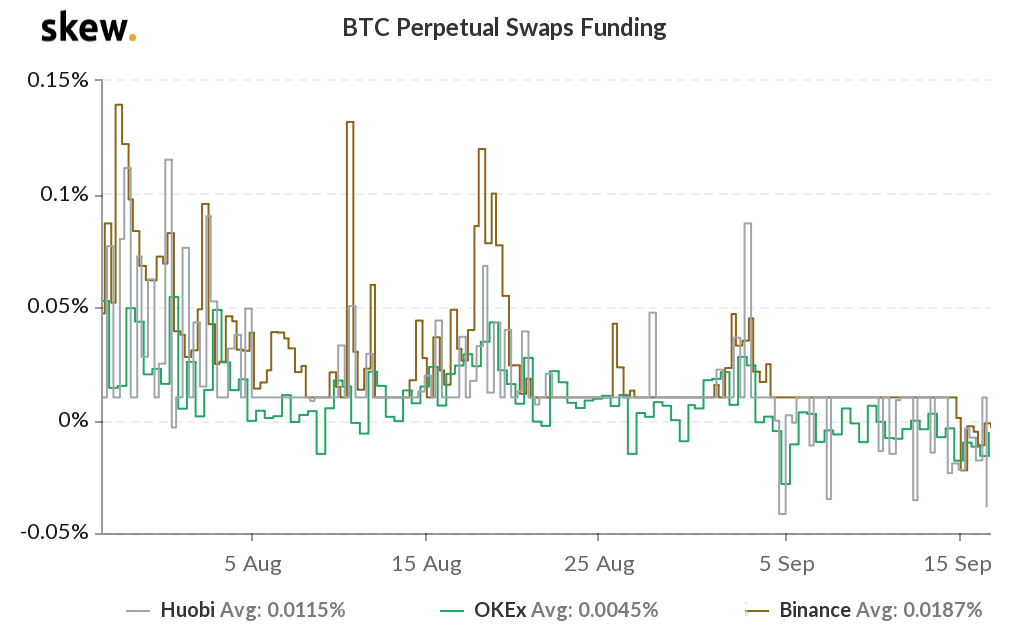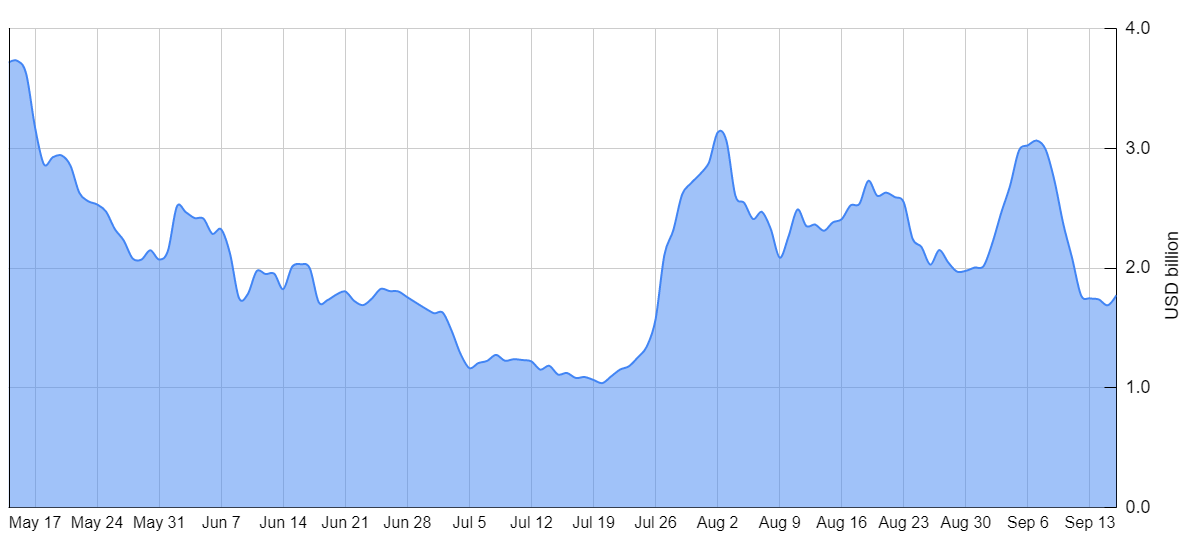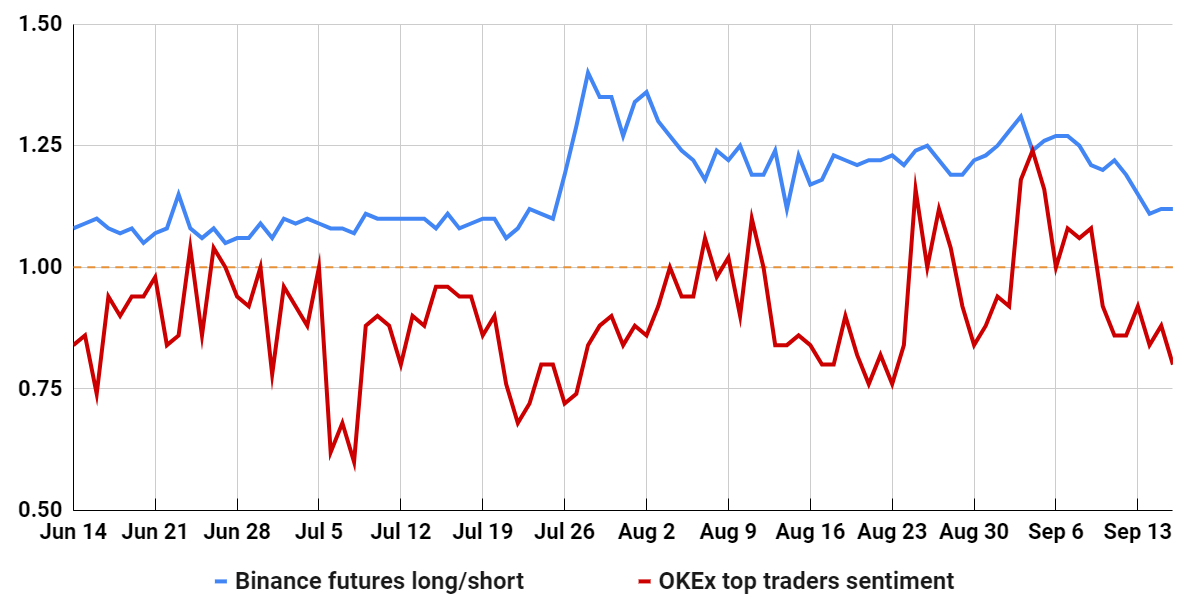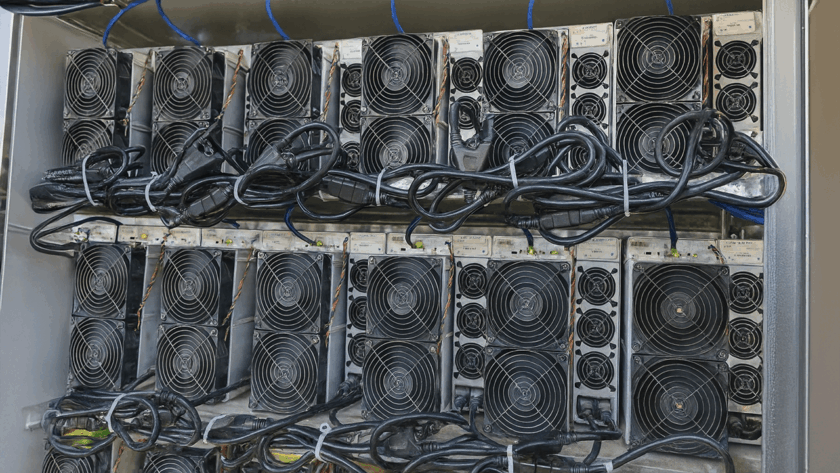Traders are usually skeptical as Bitcoin (BTC) approaches key resistances, and there was no exception as the price added 7.7% to attack the $11K level.
Not every rally will shift technical indicators to overbought levels, but there is usually some gain in volume and futures contracts sentiment that may transition from neutral to bullish. Derivatives markets are especially sensitive to trend changes due to leverage.
Yesterday, as Bitcoin price closed in on $11K, Cointelegraph cautioned that the move shouldn’t raise hopes too high as rejection at this level could be followed by heavy downside.
Let’s analyze the most recent price movement that culminated with yesterday’s $10,960 close.
BTC/USD 4-hour chart. Source: TradingView
Take notice how there hasn’t been much resistance over the past three days during the 8% rally. $11K seems more a psychological barrier than a resistance, but there are currently no signals that traders are confident after the recent price recovery.
Considering the price increase over the past three days, derivatives indicators and the top traders net long/short ratio should have shifted accordingly. Thus, the best place to start is by looking at BTC futures activity
Bitcoin’s funding rate remains slightly bearish
Any optimism from buyers should be reflected in the futures contracts funding rate. These perpetual futures contracts, also known as inverse swaps, have an embedded fee for margin usage.
At most exchanges, the funding rates are usually changed every 8 hours. If buyers are using more leverage than sellers, the funding rate will be positive; hence buyers are the ones paying it. The opposite occurs when future contracts sellers (shorts) are demanding more margin.
Not every bull run will lead to a positive funding rate. Nevertheless, it is very unusual for positive moves to happen during periods where the funding is negative.
Even if there are no additional positions created during bull runs, the liquidation of short-sellers will cause the funding rate to go up. This is caused by decreasing demand for leverage shorts traders, but usually it is also accompanied by buyers adding long positions.
Bitcoin perpetual swaps 8-hour funding rate. Source: Skew
The data above shows a brief moment of optimism as the funding rate turned positive on Sept. 2 ahead of the drop below $11K. Since then, the indicator turned negative, and there is no indication of bullishness.
Variations between -0.05% and +0.05% fees per 8-hours are considered quite normal and, therefore, a neutral indicator. This is equivalent to -1% to +1% per week, so unless it is kept for an extended period, it is uneventful.
Lackluster volume weights on trading sentiment
Volume is the one unquestionable indicator, regardless of whether one is doing technical or fundamental analysis. Any significant move not backed by a sizable trading activity becomes doubtful in traders and analysts’ minds.
7-day Bitcoin aggregated average volume. Source: Messari
Data from Messari shows the adjusted aggregated volume at $2.15 billion Bitcoin for Sept. 15 and 16. Although 13% above the previous 7-day average, it is still far below the $3 billion peak levels seen over the past two months.
This is another telling signal that the BTC rally initiated a week ago seems to be fading away rather than gaining strength for continuation to $12K.
Binance provides data on the top traders’ long-to-short net positioning. This is an excellent indicator to determine whether professional traders are leaning bullish or bearish.
OKEx has a slightly different indicator, measuring top traders sentiment. Considering the difference in methodologies, one should monitor changes in each index instead of absolute numbers.
Top traders sentiment & net long/short. Source: OKEx, Binance
Binance futures top traders remain net long, although the current 1.12 ratio is the lowest figure recorded since July 25 (8 weeks ago). A similar trend is depicted in the OKEx top traders sentiment metric, which has declined to 0.80 from a 1.18 peak on Sept. 3.
These indicators reinforce the previously discussed volume and funding rate analysis and show a lack of strength behind the recent BTC recovery from the sub-$10K level.
It is also worth noting that there are absolutely no bearish signals from any of these indicators. Instead, the market shows that traders are either in mild disbelief or simply are disinterested in participating at the current levels.
The views and opinions expressed here are solely those of the author and do not necessarily reflect the views of Cointelegraph. Every investment and trading move involves risk. You should conduct your own research when making a decision.







